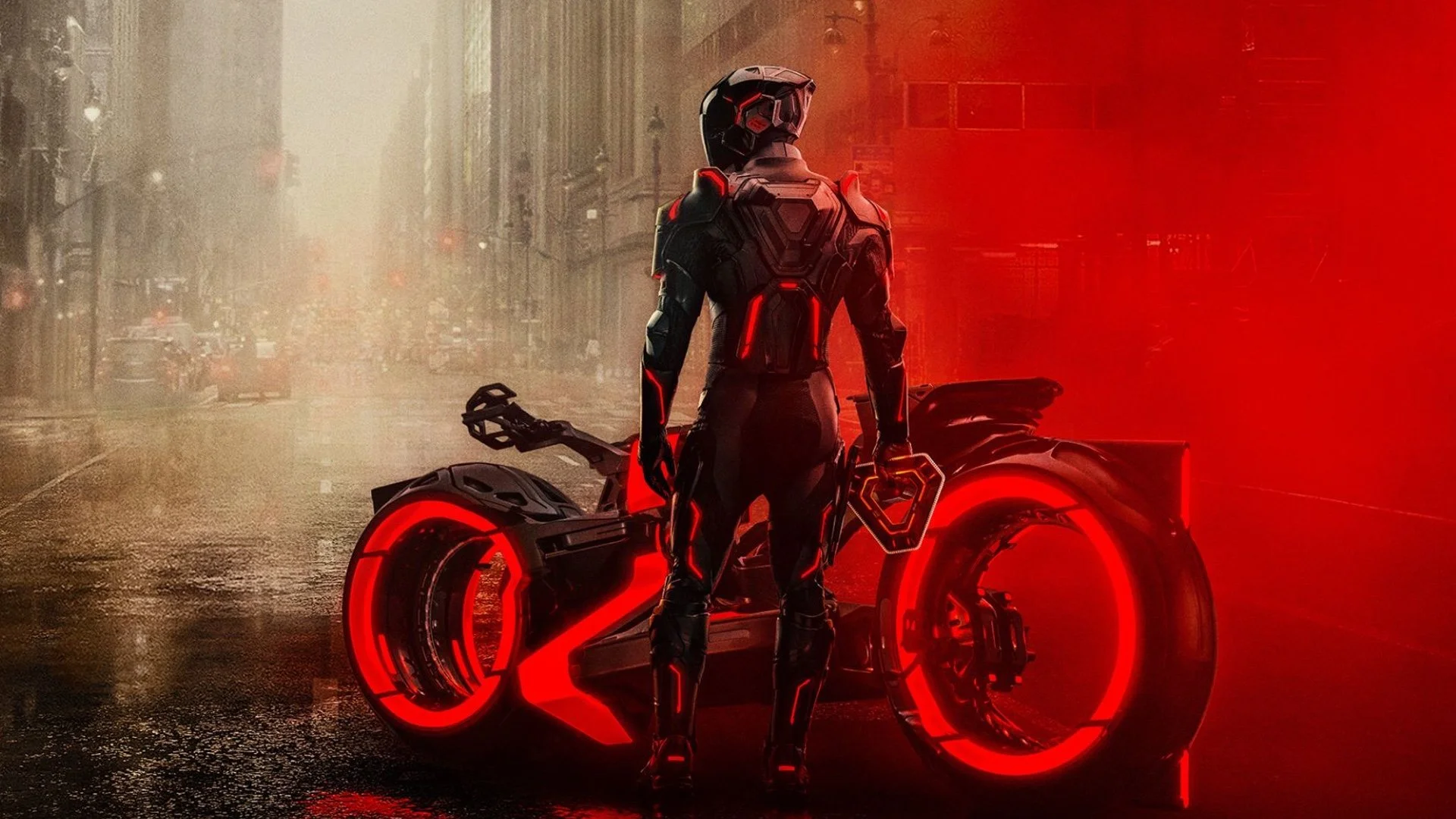TRON: ARES Lightcycles Rev Up Old Ideas from Joseph Kosinski’s Lost Sequel
It’s been 43 years since audiences first raced into the digital frontier with Tron, and now, the grid has rebooted once again in Tron: Ares.
The long-awaited third installment follows Ares (Jared Leto), an advanced program who starts questioning his orders from CEO Julian Dillinger (Evan Peters). His rebellion sends him into the real world on a mission to find Eve Kim (Greta Lee), the current CEO of Encom.
As Encom and Dillinger Systems battle to uncover Kevin Flynn (Jeff Bridges)’s legendary permanence code, the boundaries between man and machine blur more than ever before.
For production designer Darren Gilford, returning to the grid after fifteen years was a chance to resurrect ideas that had been shelved from director Joseph Kosinski’s abandoned sequel to Tron: Legacy.
“There were a lot of things that carried over,” reveals Gilford. “Joe wanted to be [the sequel] to be more based in the real world, and the Dillinger grid was always there from the beginning.
“We started that in 2015 or 2016, and I had started the earliest concept art back then with a [different] team of concept artists and an art department. I was able to go back with Joachim [Rønning] and harvest some of those key elements.”
That concept evolution shows up most clearly in Ares’ sleek, military-inspired lightcycles. During a high-speed chase between Eve, Ares, and Athena (Jodie Turner-Smith), the production built full-scale Dillinger lightcycles for the actors to ride, complete with practical motorcycles to match.
Gilford explains, “As we were developing the movie and learning about what the characters have to do, we had to figure out what are the rules of the light cycle.
“The most important things were that the light cycle had to have two critical riding positions and an aggressive high speed position, which is my favorite look of the bike. When the full canopy is deployed and the backpacks deployed, it really feels like the rider is enveloped and engulfed, like man and machine.”
Bringing these bikes to life wasn’t just a matter of looks, it required a little technological magic worthy of Encom itself.
“We created a power source in the middle of the bike which was a yellow gyro that spins and animates,” says Gilford. “Throughout how the bike is moving, that telegraphs some of the motion of the bike. That yoke is the heart of the bike and what the hinges are, so the front fork and the front wheel actually rotate around that energy source.”
While Tron: Legacy featured digital lightcycles, Ares takes things into the real world with functional, full-sized bikes.
“On Legacy, we never actually built a real bike until the end. We just built them for marketing. We built the original bikes [digitally] and we built gimbals and rigs for Garrett [Hedlund].
“But for this film, Joachim was adamant that he wanted real bikes on the street being towed in any capacity we could. I have a transportation design background and I was a car designer originally, so it was an honor and a privilege for the opportunity to get to design these vehicles,” says Gilford.
With Tron: Ares, Gilford and director Joachim Rønning are not only pushing the visual envelope, they’re also carrying forward the design DNA that Joseph Kosinski began crafting nearly a decade ago. The result is a perfect fusion of concept and reality.
Source: Vairiety
